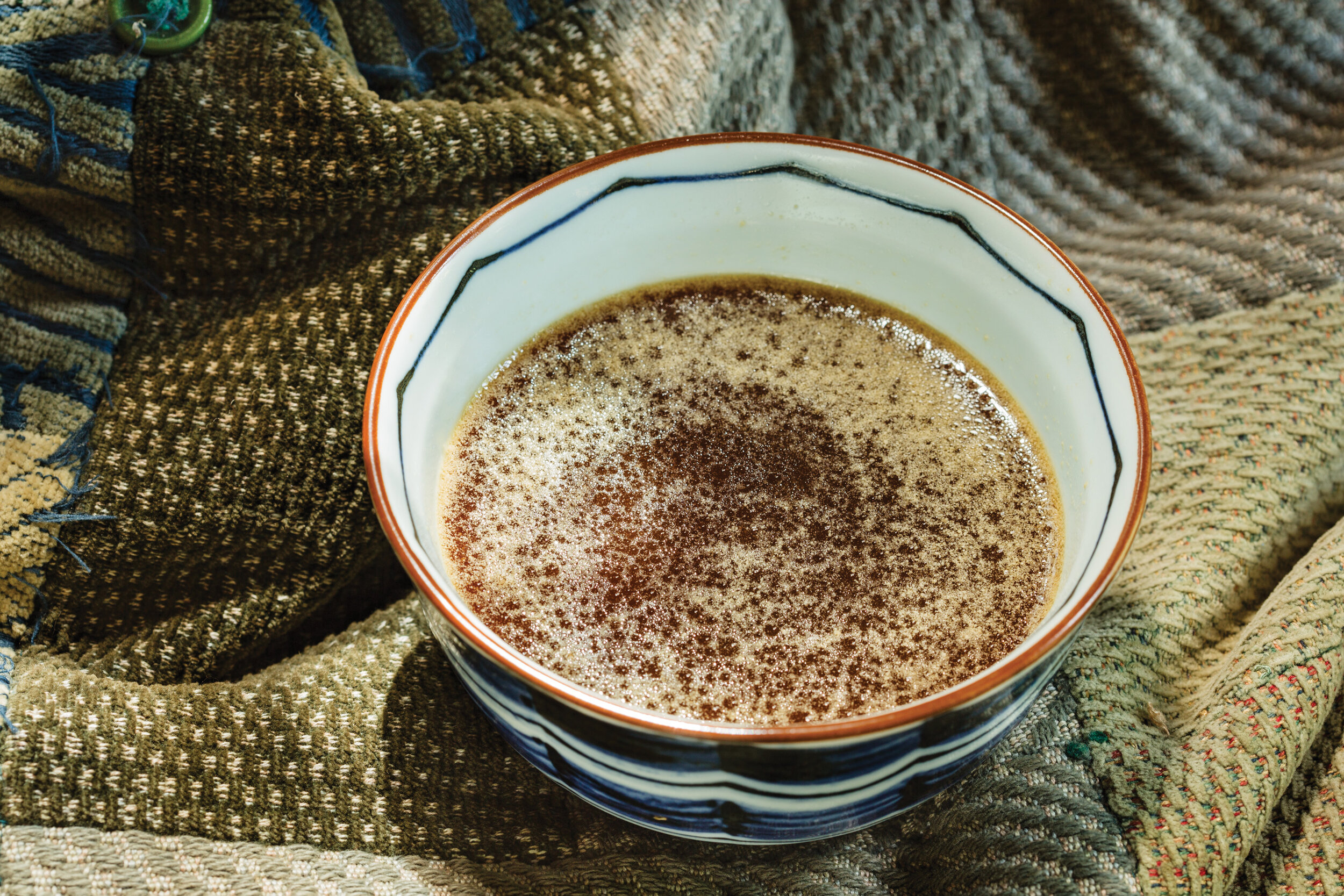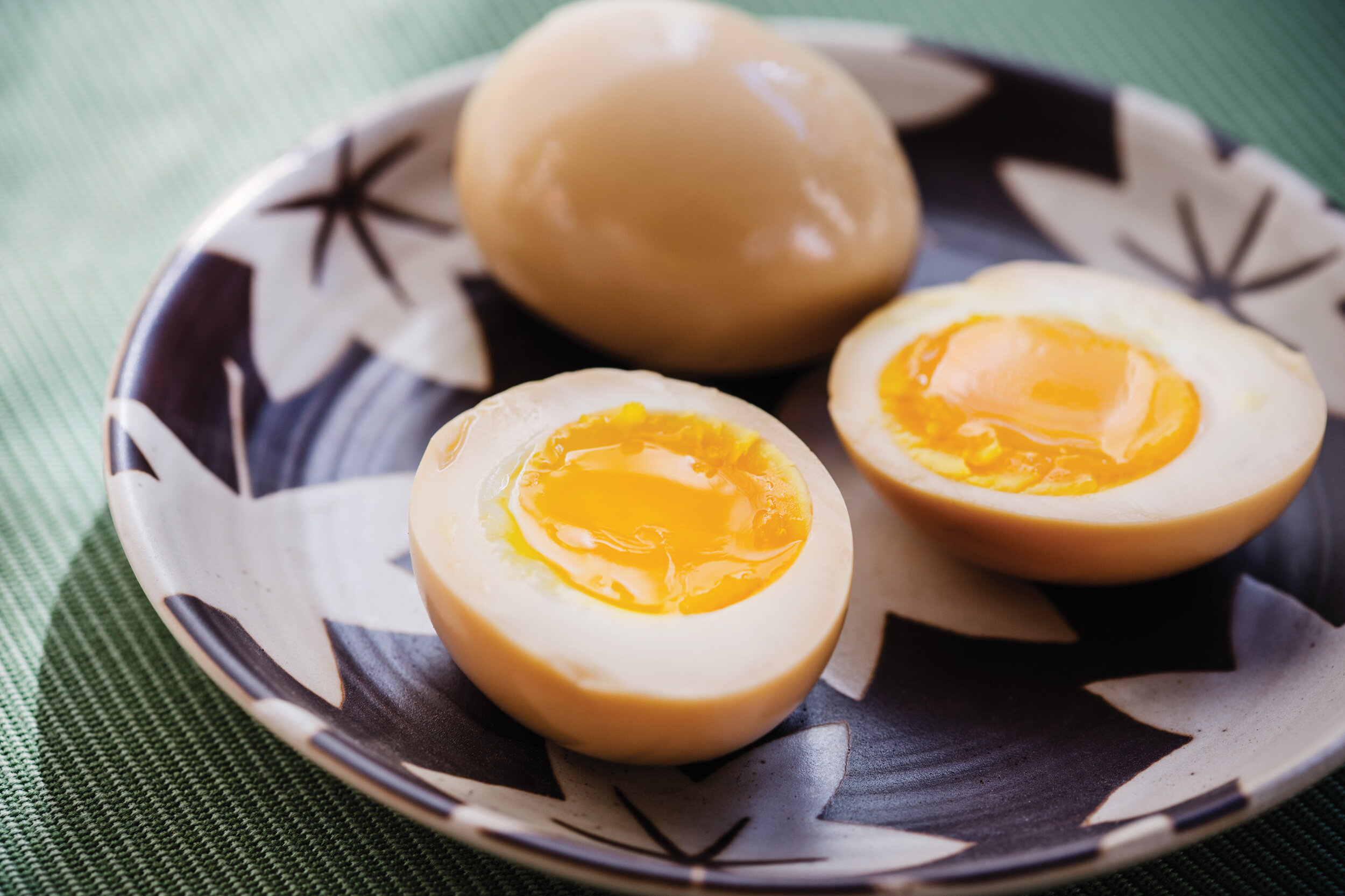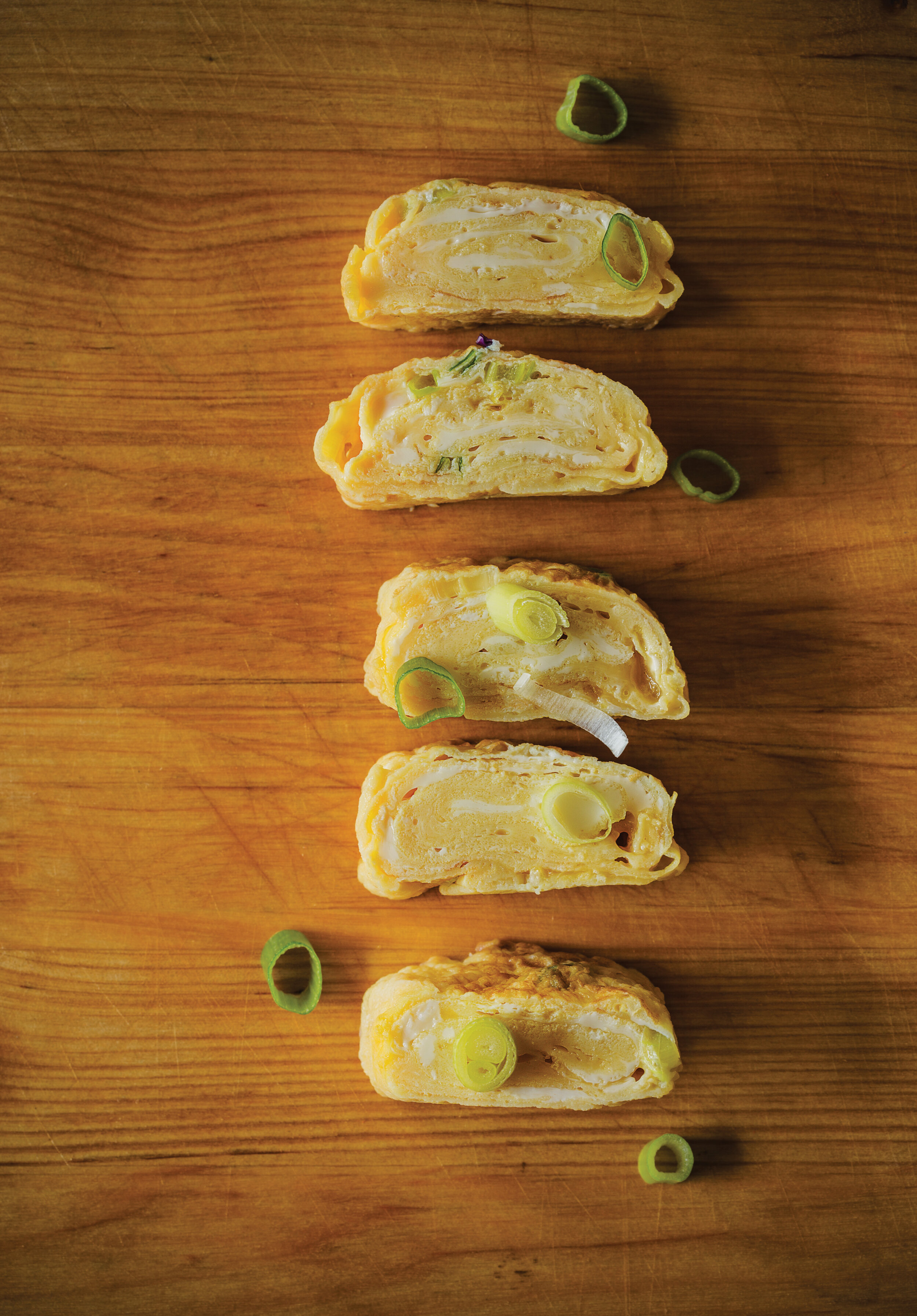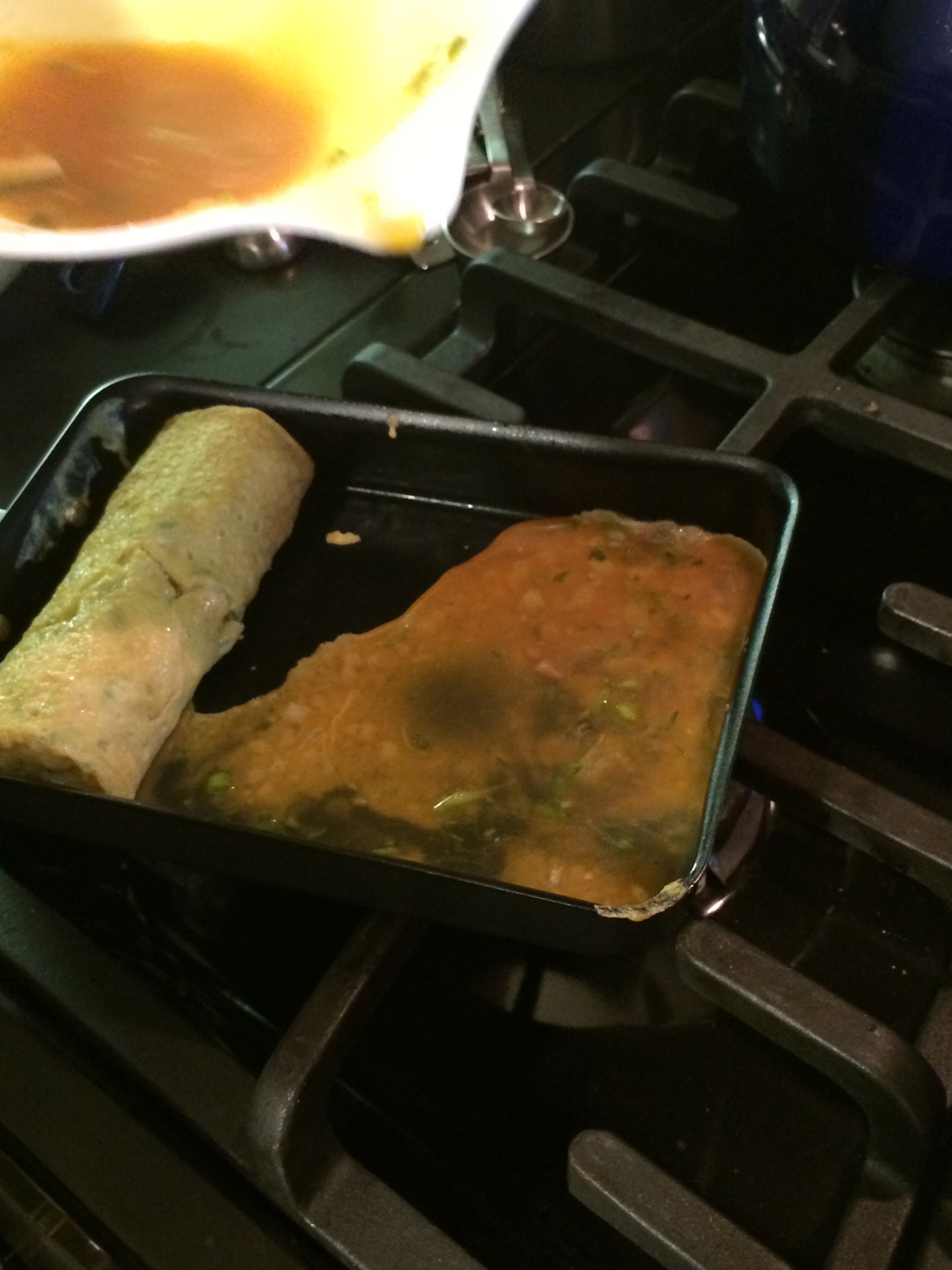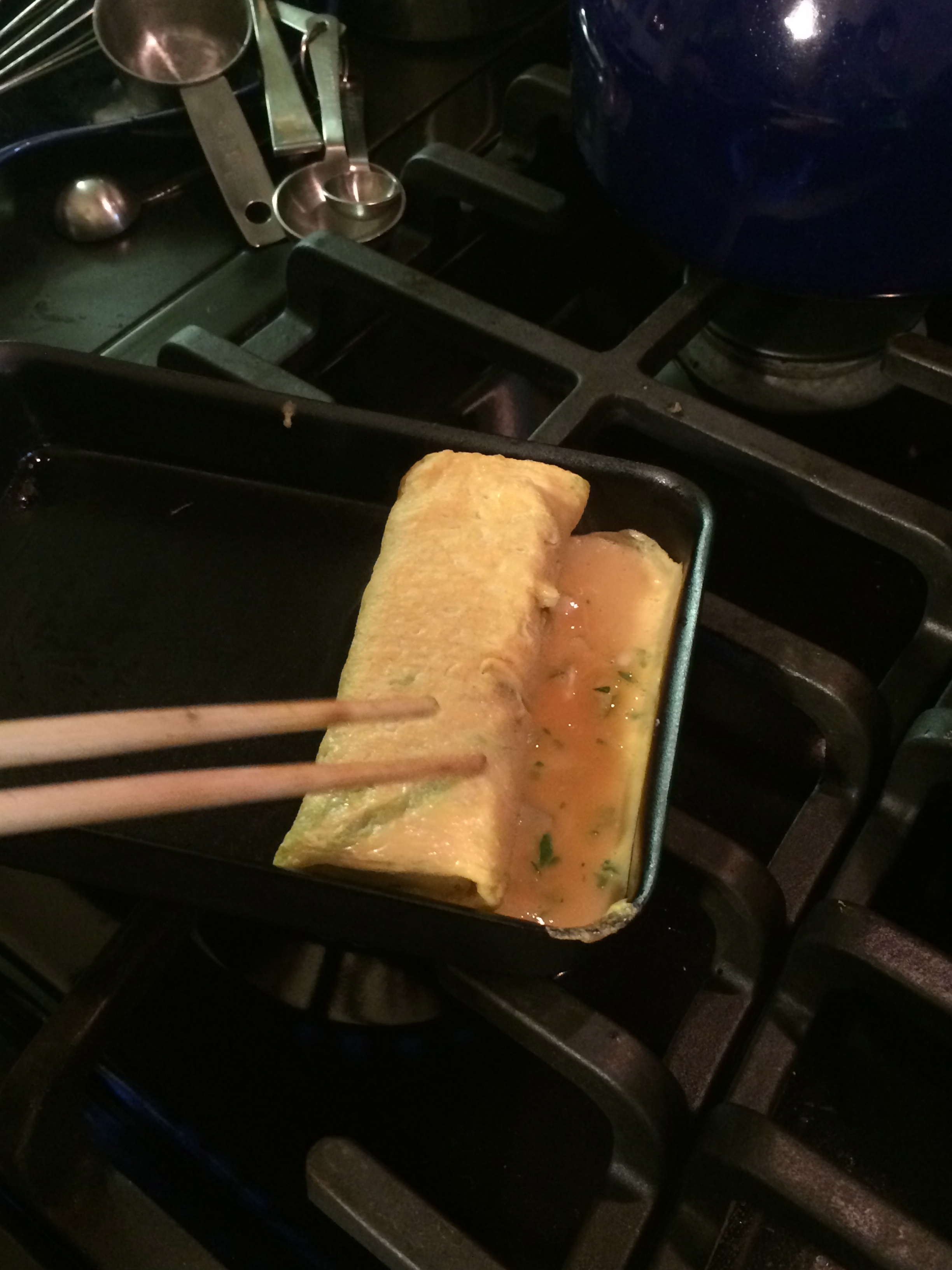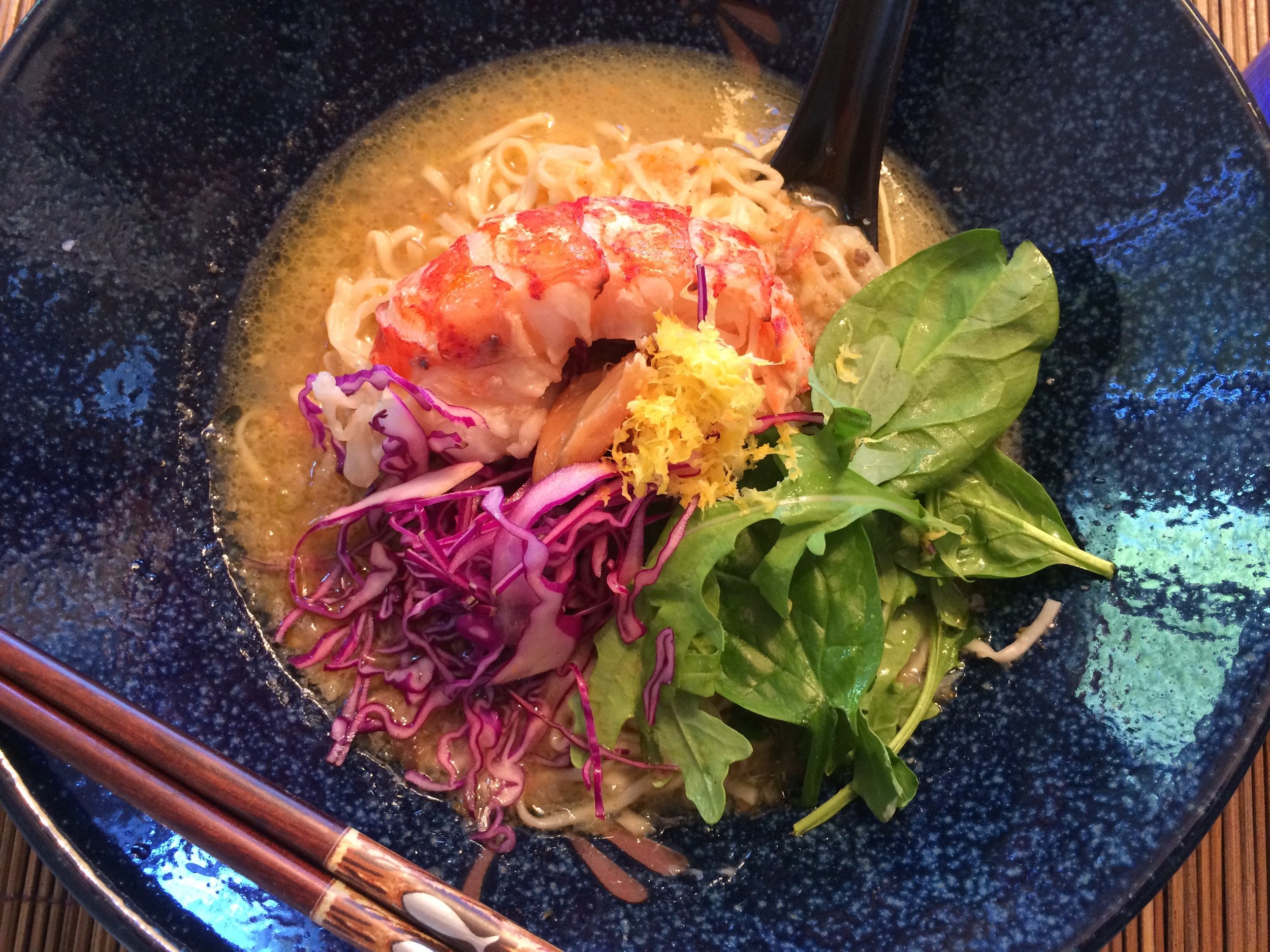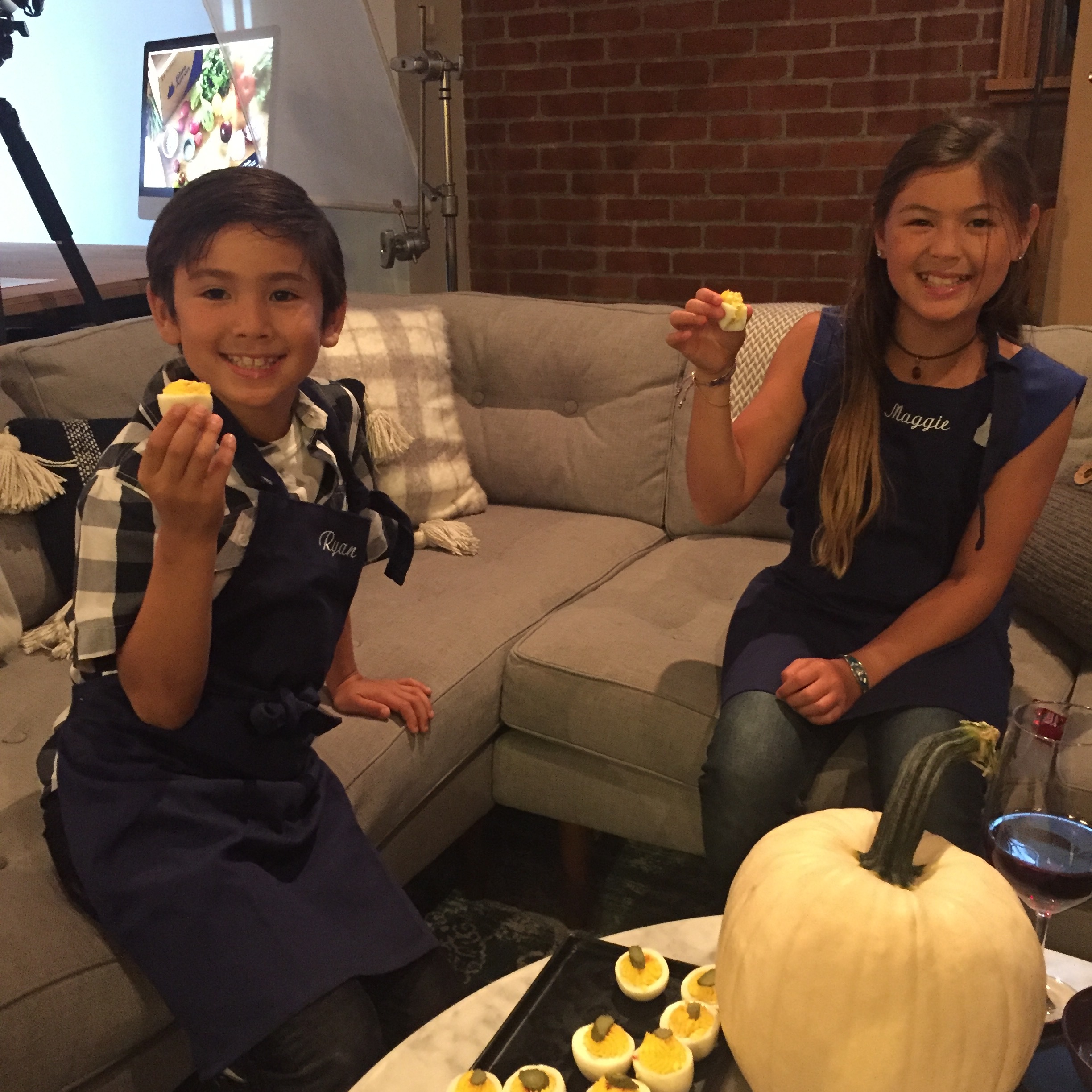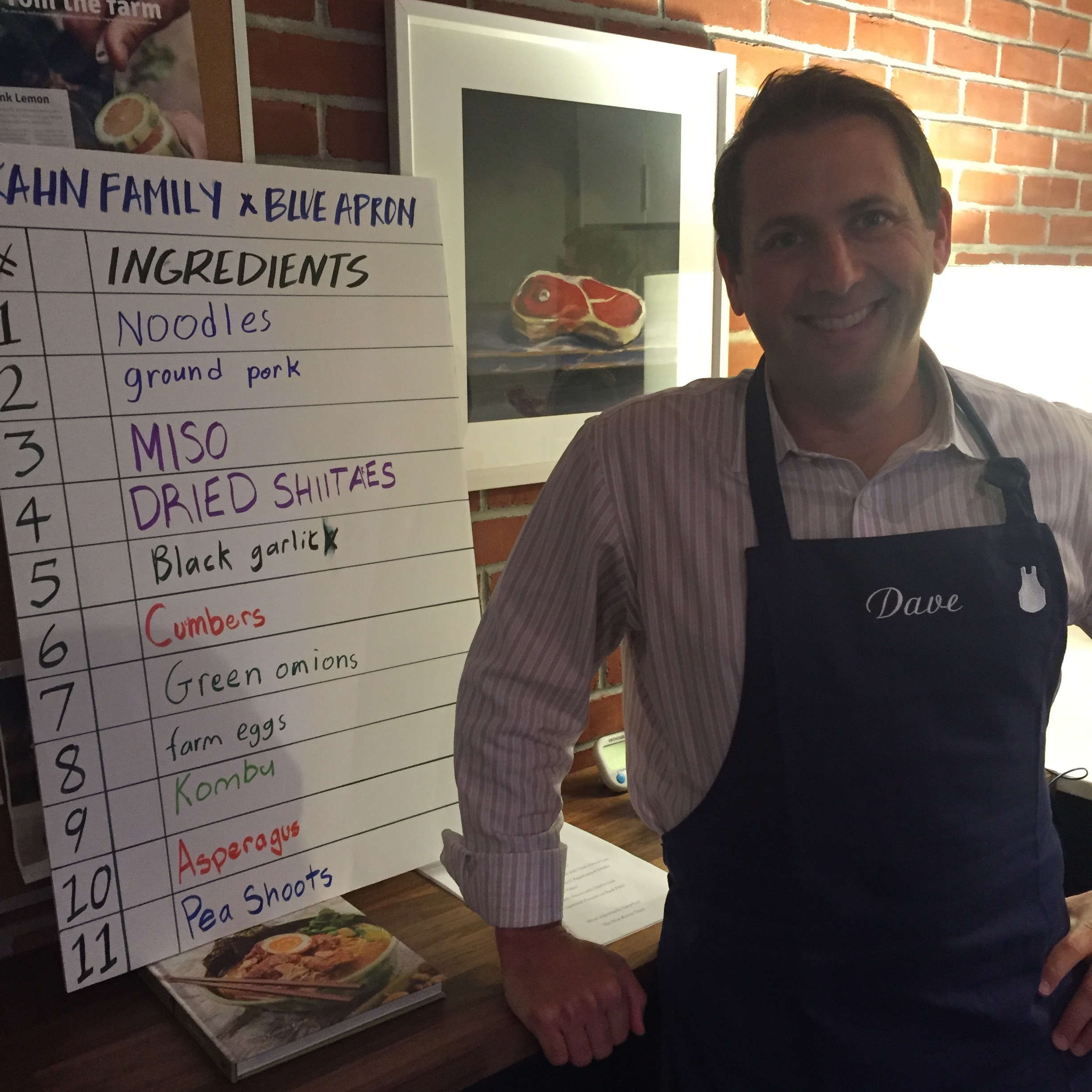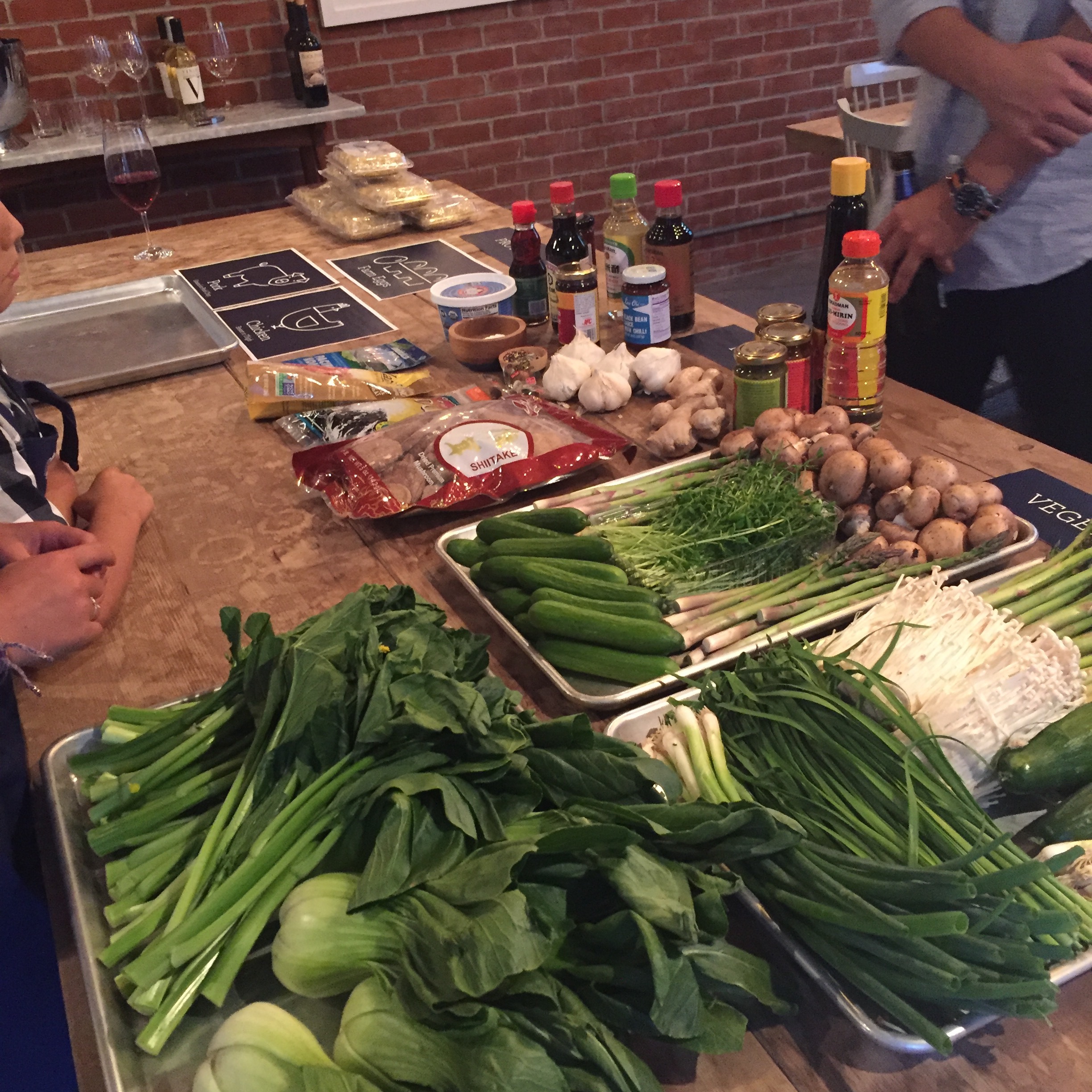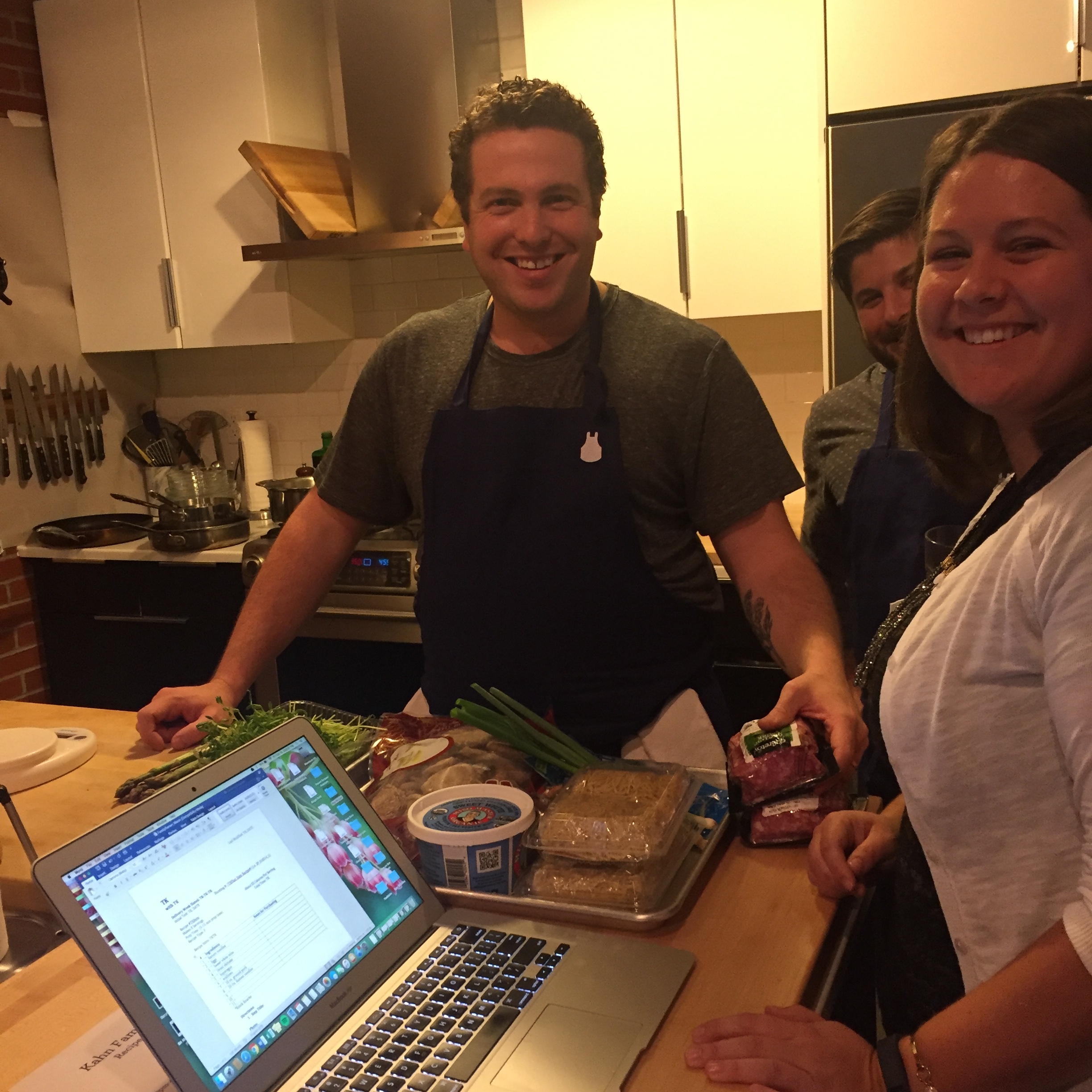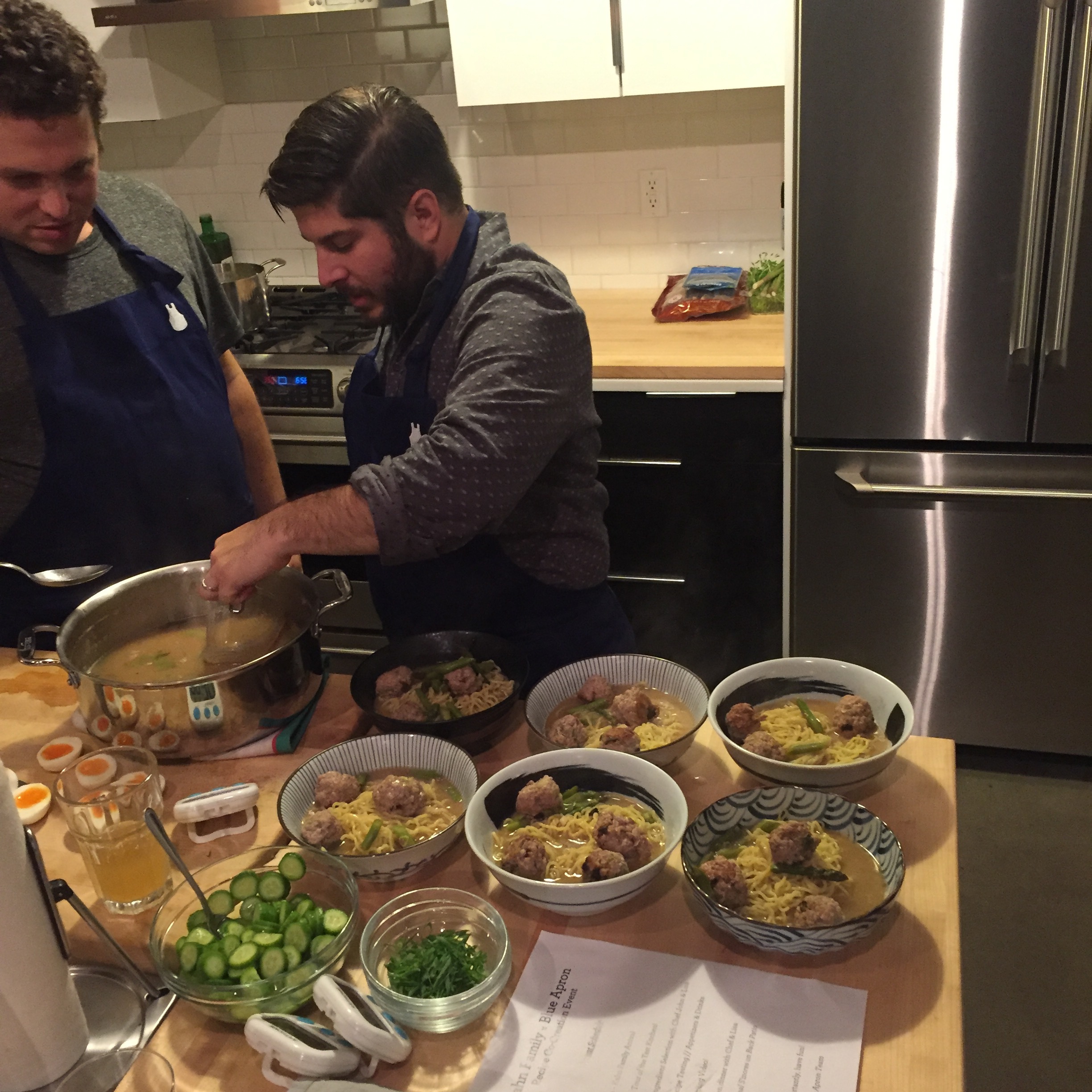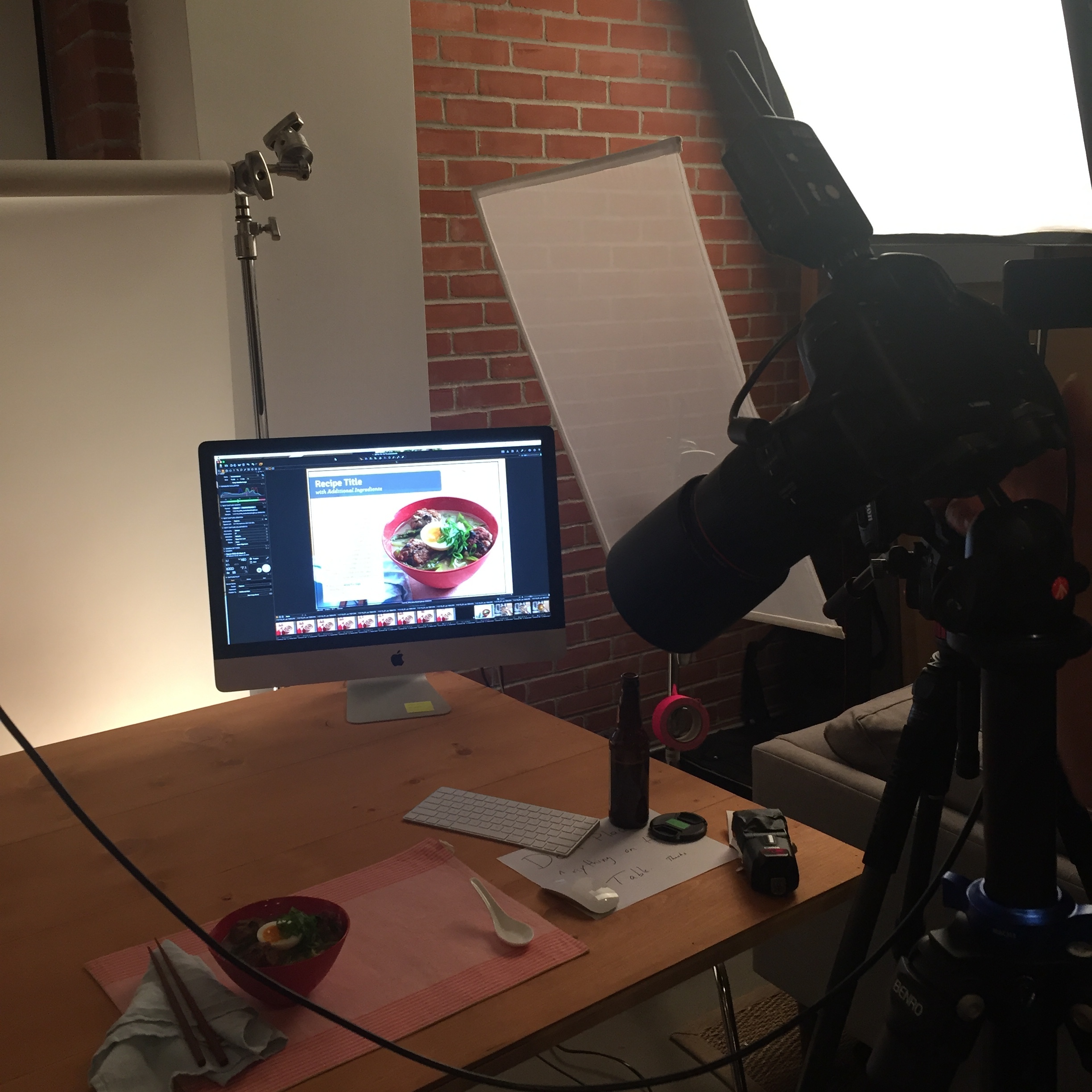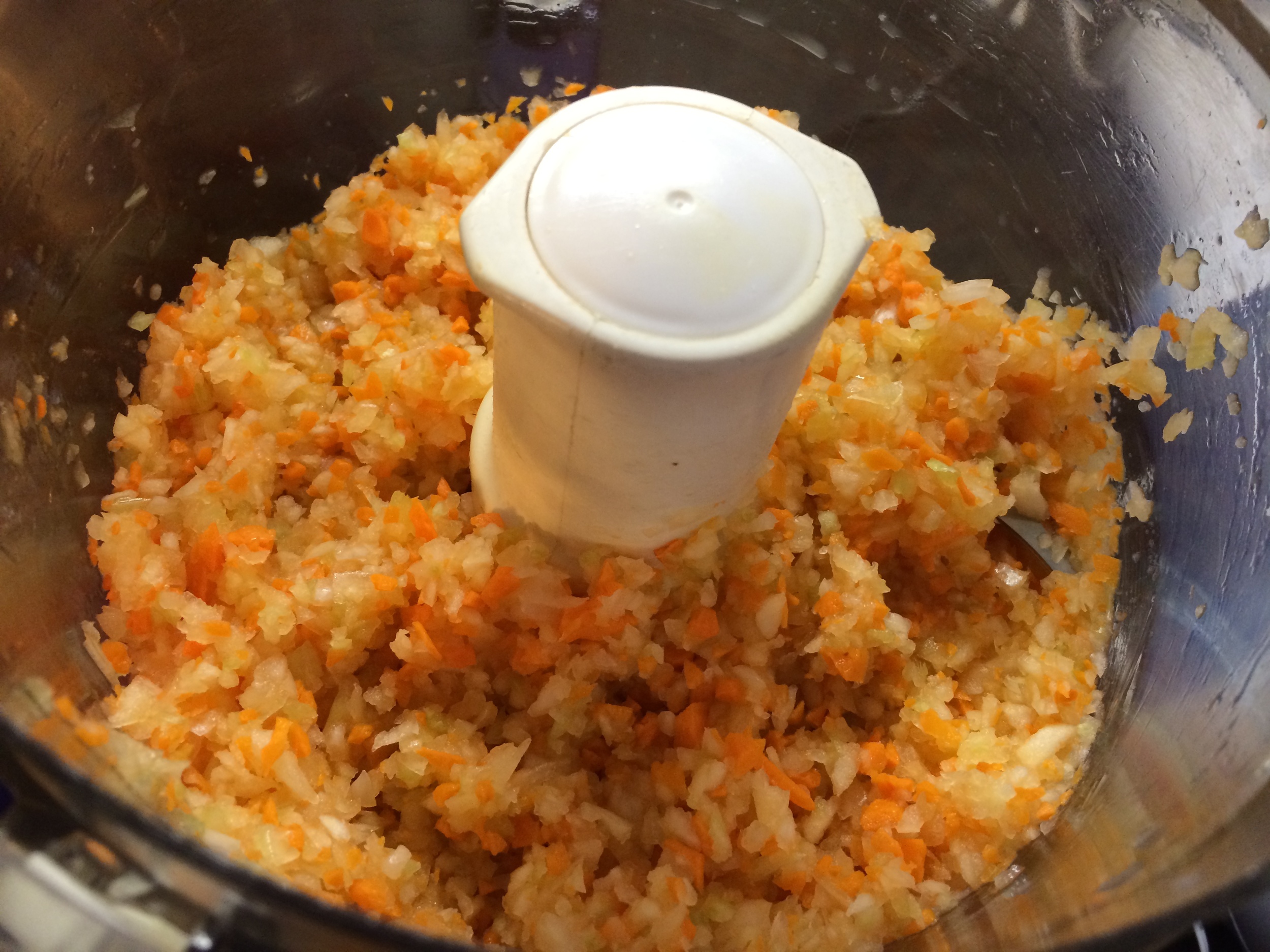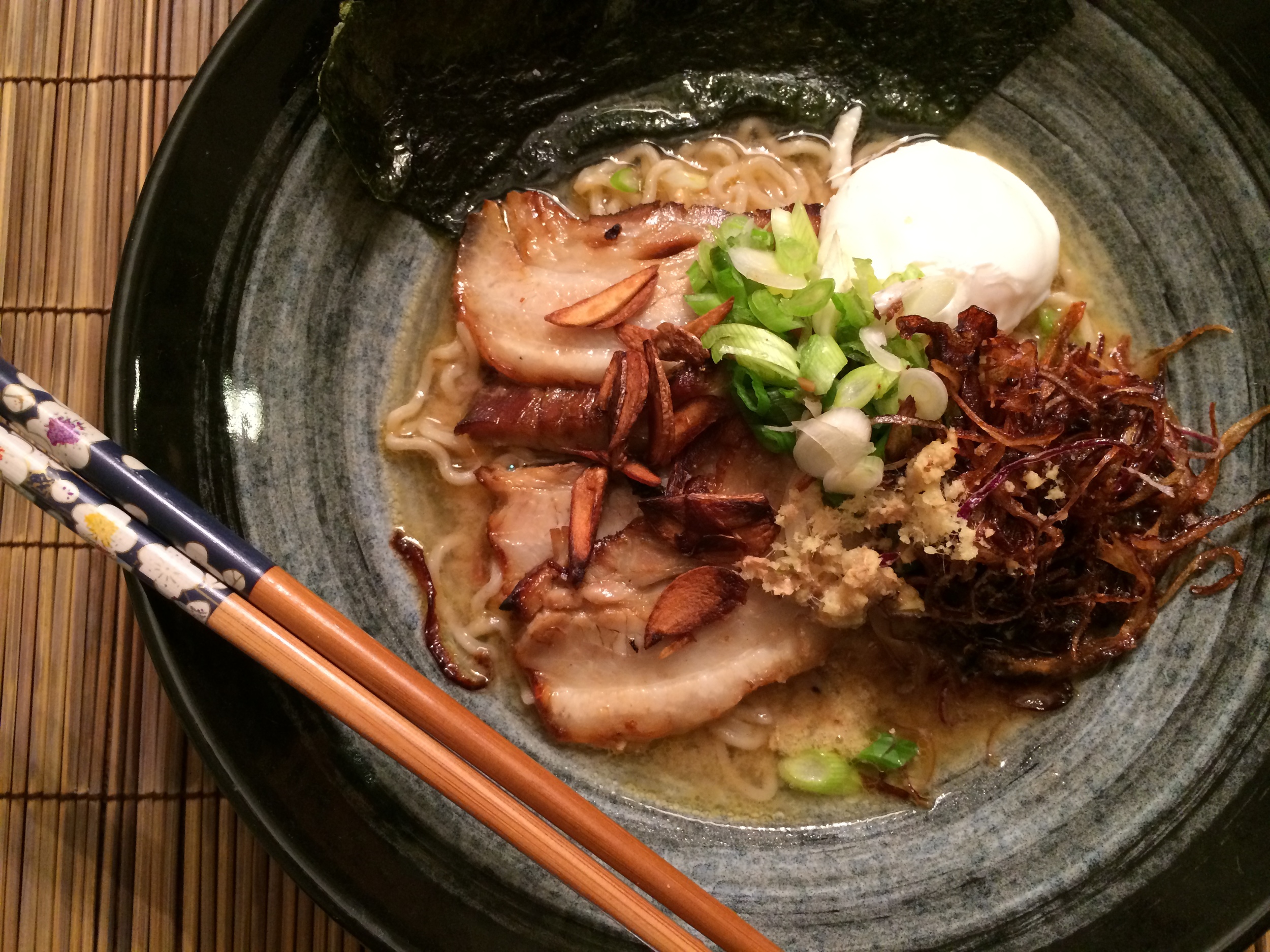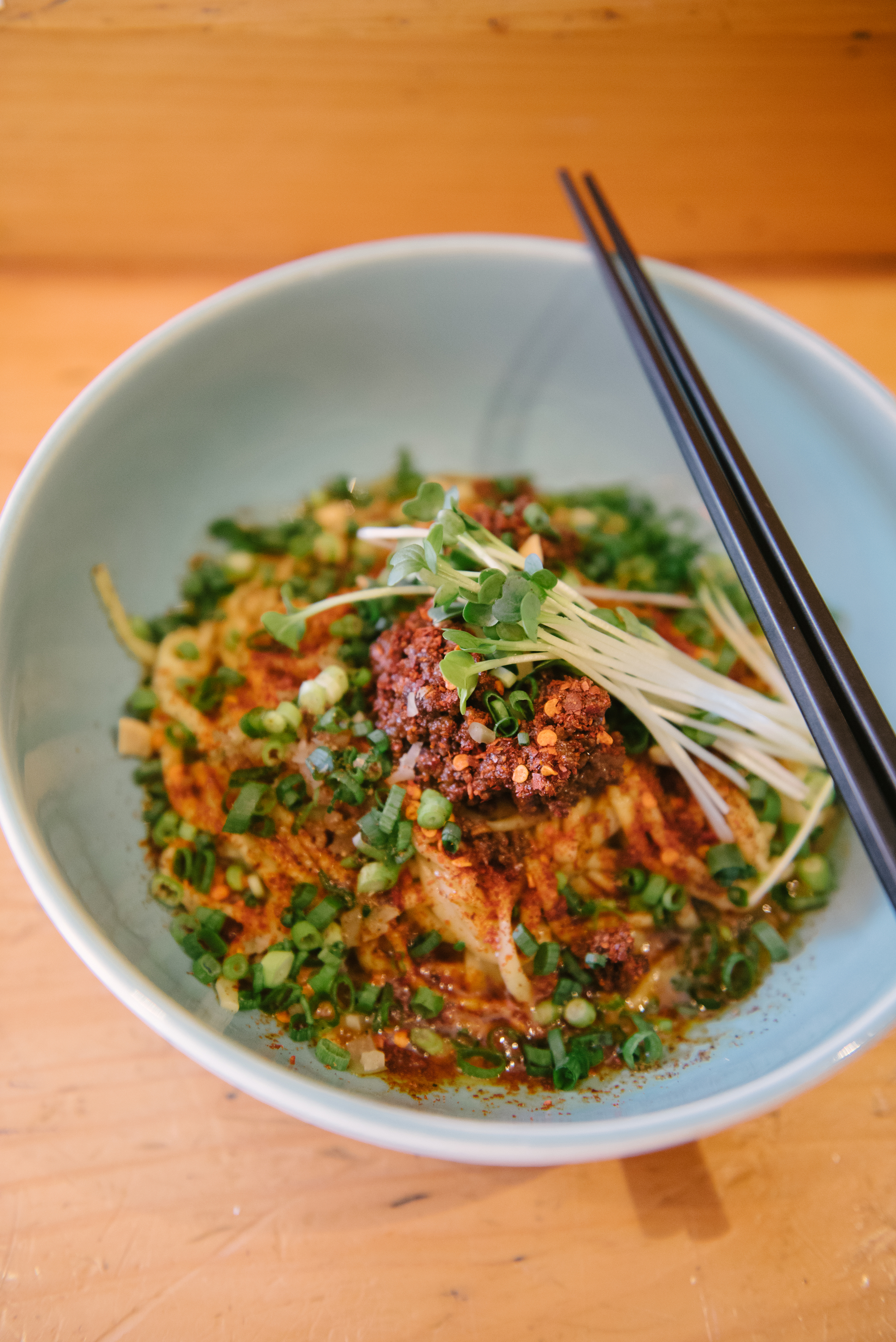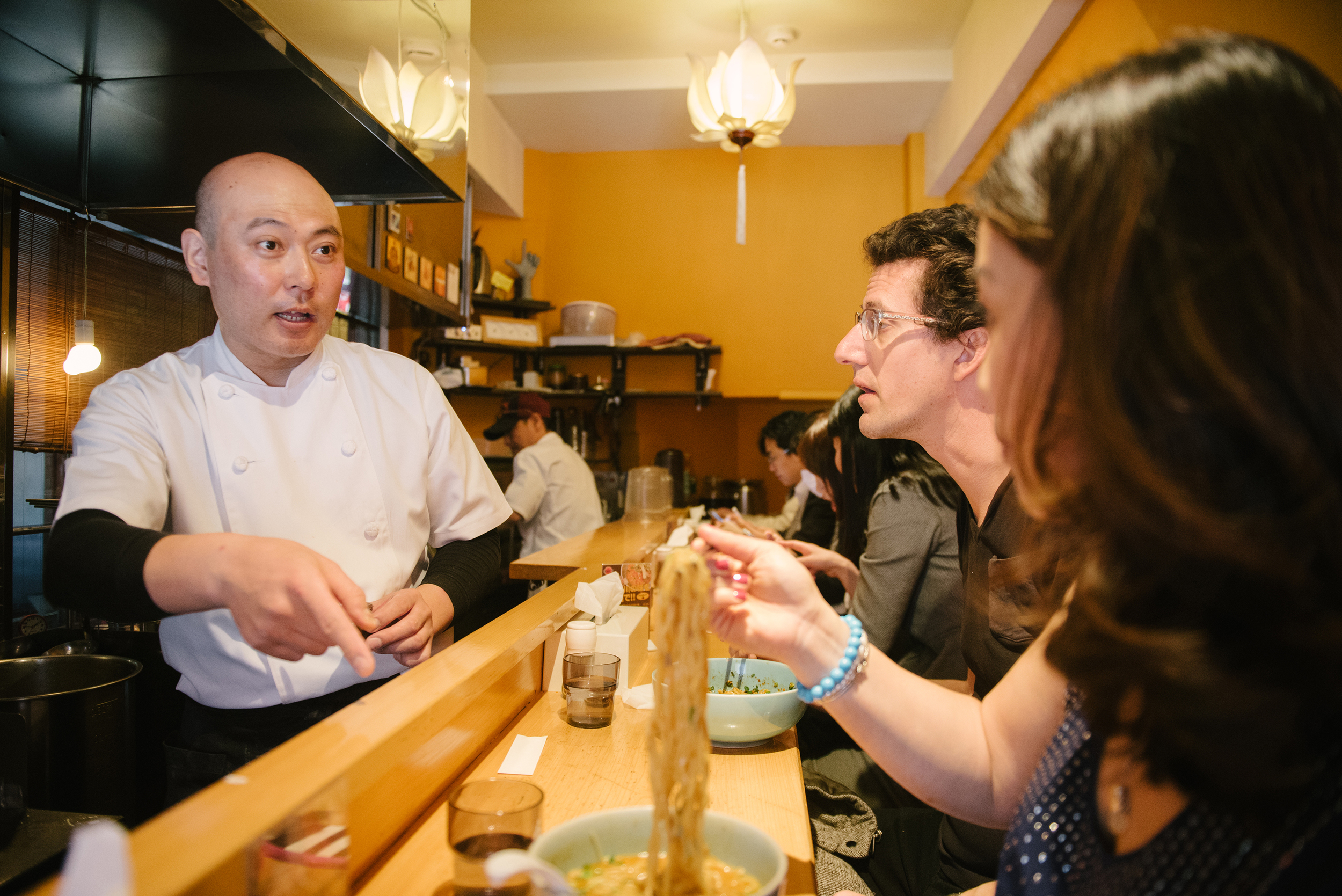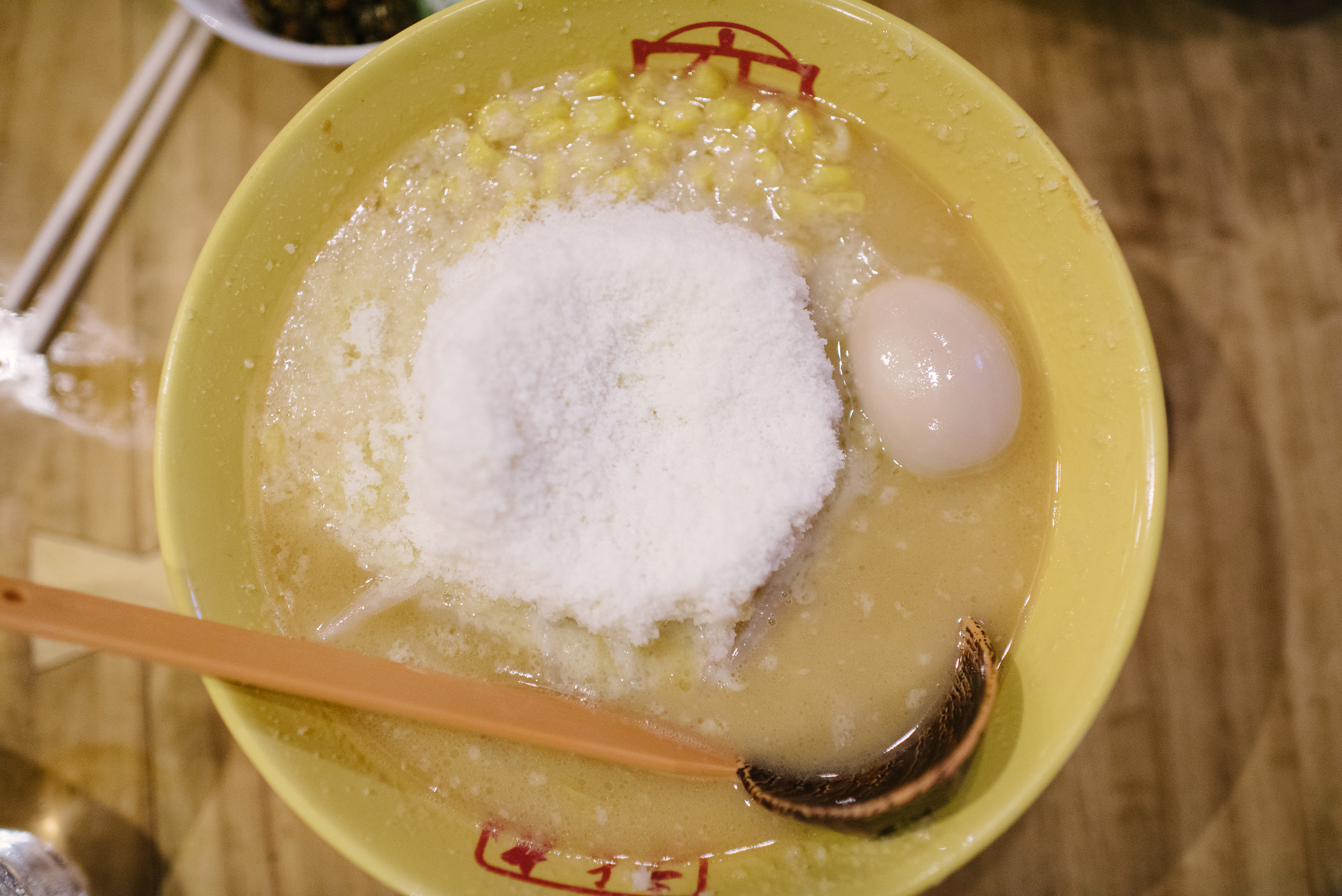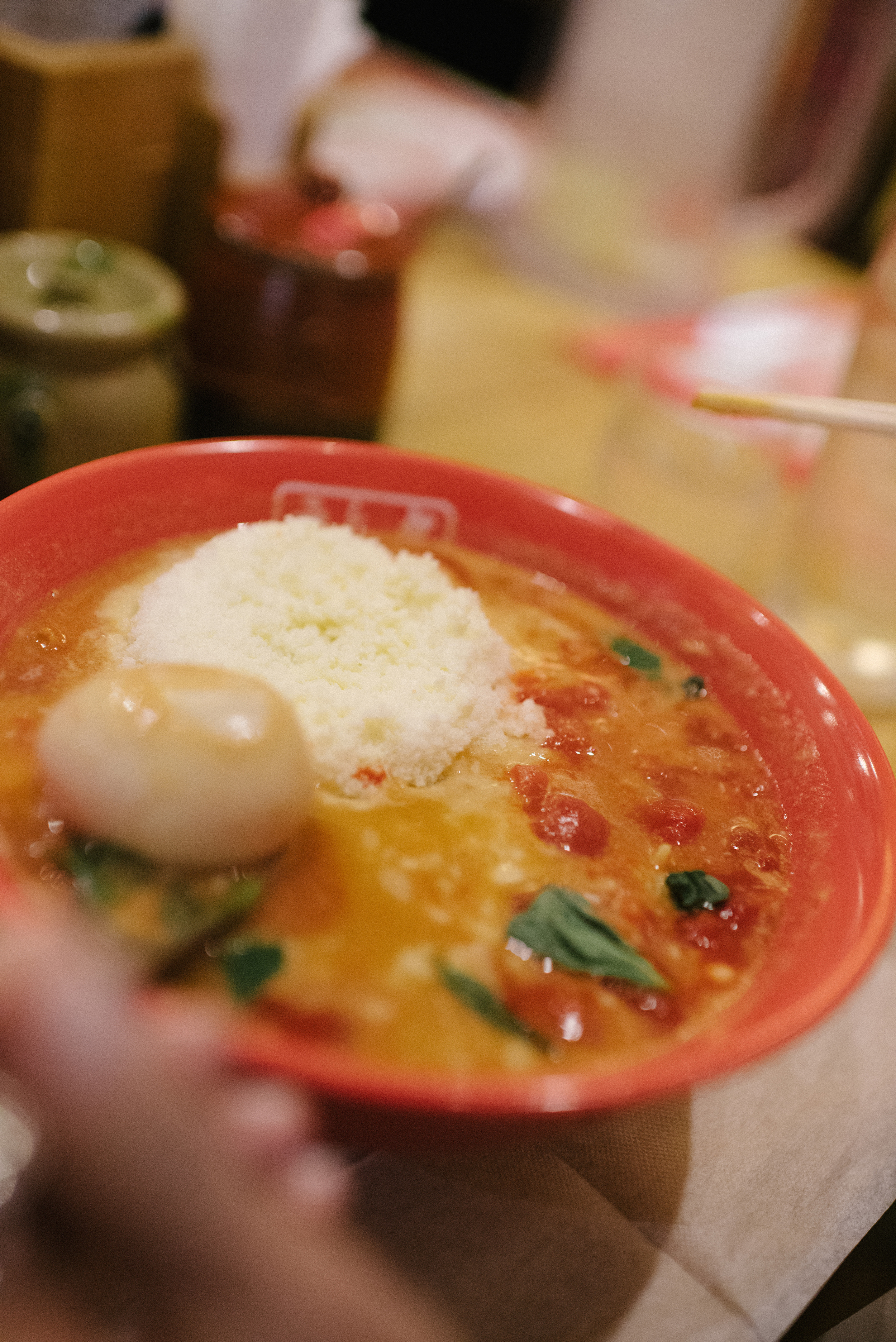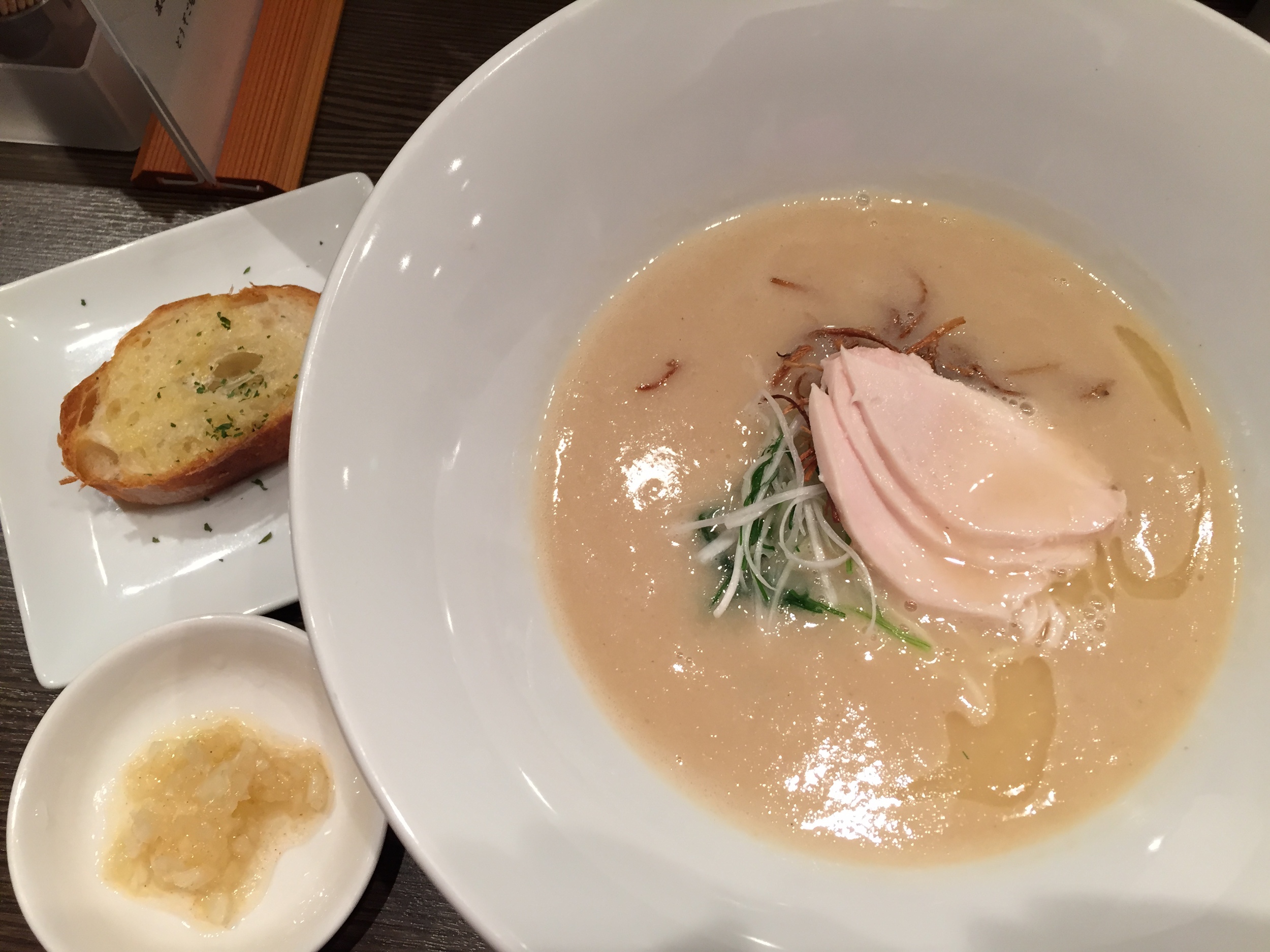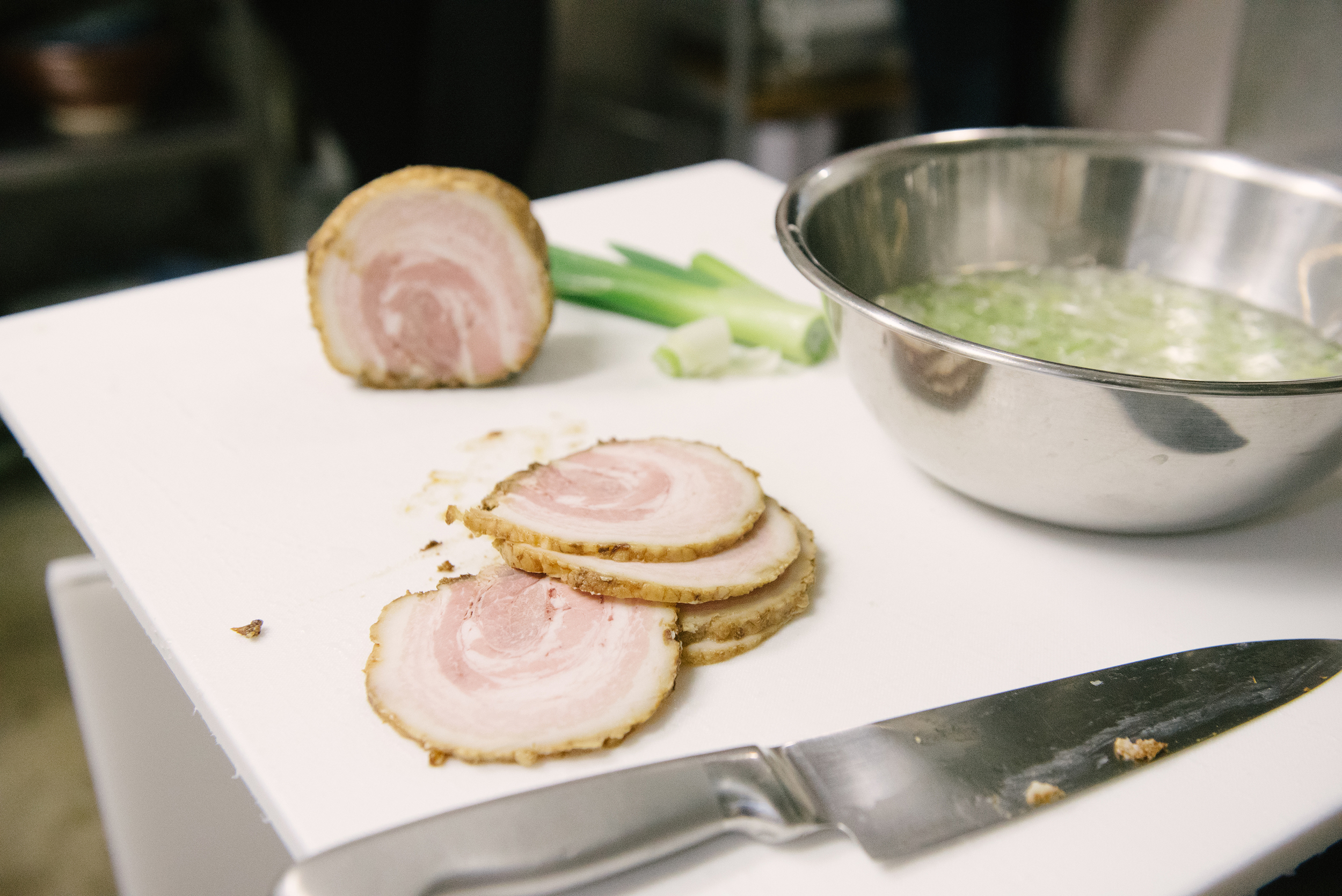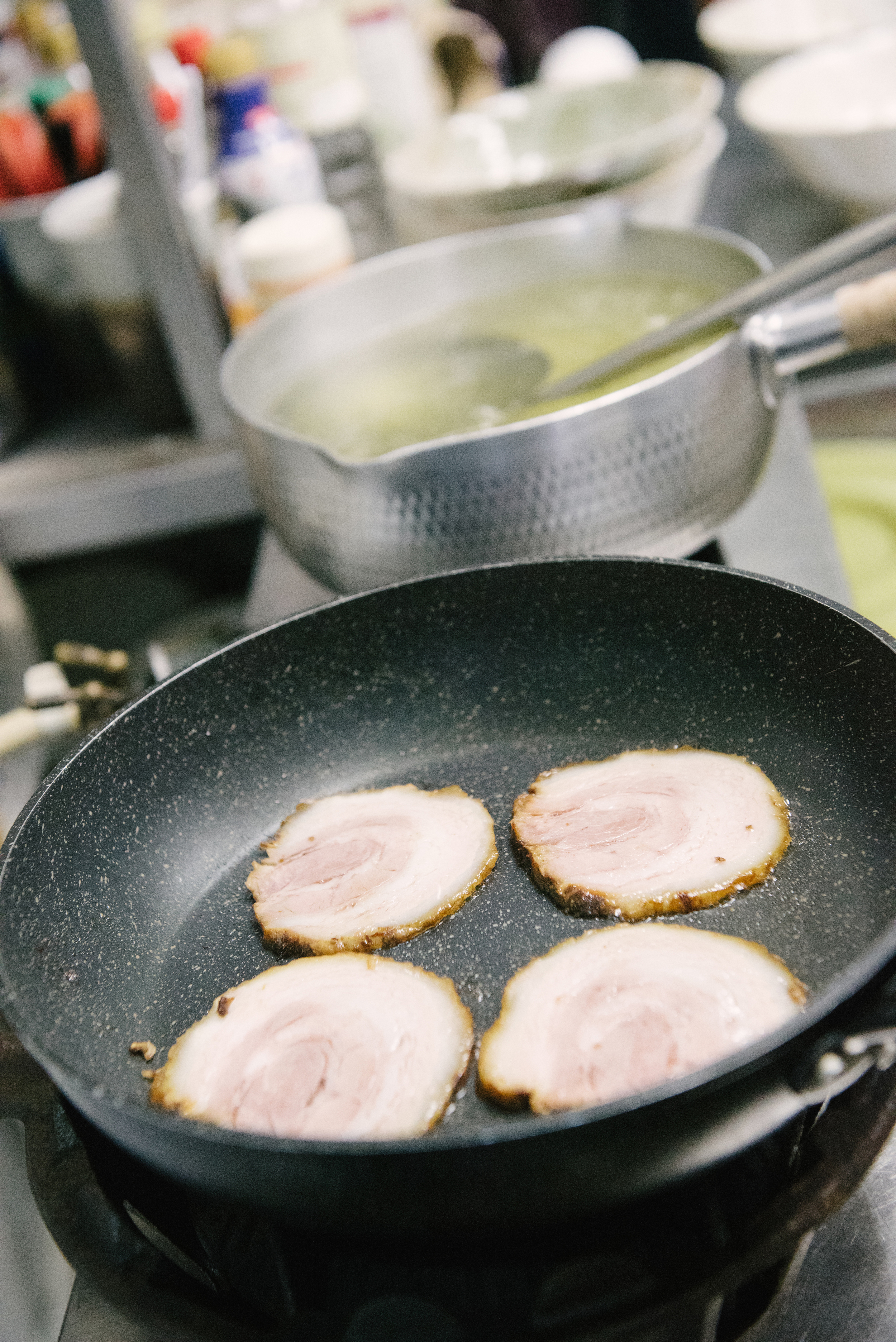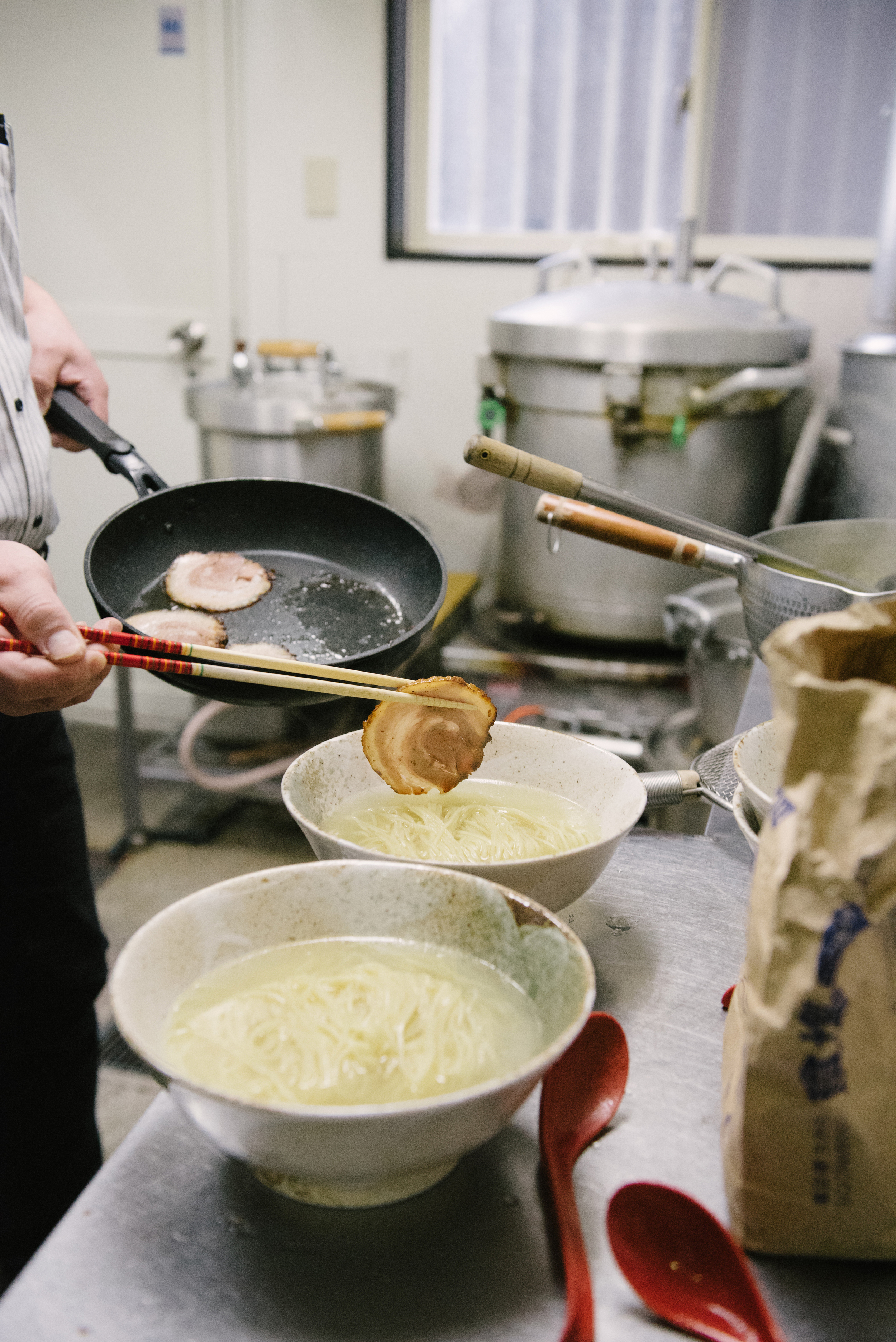If you’ve made my Tonkotsu Base, then you have a basic shoyudare, or strong soy sauce flavor base, with which you can combine any stock or fat to make a simple shoyu ramen. This recipe combines the stock, shoyudare, and fat into one.
With this recipe, I’ve slow-cooked oxtail sections in a big crock pot, which helps render the fat from the bones without having to constantly stir. You could also make this in an instant pot, slow cooker, large Dutch oven, or heavy-duty pot. The oxtail adds a meaty goodness and complexity to the fat component that complements the soy sauce. You’ll have to go to an Asian market to find dashi, or Japanese stock, which comes in an instant granular form—there are many varieties to choose from, so just make sure to pick one that has bonito fish as the primary ingredient. It’s also important to have dried shiitake mushrooms, as they’ll give a more intense flavor to the soup than fresh ones. The final soup will taste overly salty, but when the noodles are added in, they will soak up the soup and balance it out.
Shoyu Base

Ingredients
- 4 tbsp bacon fat (optional but recommended), ghee, or coconut oil
- 2 medium-sized carrots, peeled and cut into large dice
- 1/2 onion, peeled and cut into large dice
- 3 green onions, cut into thirds
- 1 apple, cored and quartered (with skin on)
- 2 celery stalks, cut into thirds
- 5 garlic cloves, peeled and left whole
- 5 dried shiitake mushrooms, broken up into small pieces
- 1 whole organic chicken
- 4 medium oxtail sections, roughly 2 inches (5 cm) long
- 1 lemon, quartered
- 2 qts low-sodium chicken stock
- 3⁄4 cup high-grade soy sauce
- 4 tsp dashi granules (Japanese stock)
- 2 tbsp salt
- 1⁄2 tsp white pepper
- 1 bay leaf
Instructions
- In a crock pot, slow cooker, large Dutch oven or heavy-duty pot, combine the bacon fat, carrots, onion, green onions, apple, celery, garlic, and dried shiitake mushrooms.
- Add the whole chicken, oxtails, and lemon, then pour over the chicken stock, followed by the soy sauce, dashi, salt, pepper, and bay leaf—the stock should almost cover the chicken.
- Set the crock pot or slow cooker to high and let cook for 10 hours. If using a large Dutch oven or pot, bring to a boil over a high heat and set in an oven preheated to 200F for 8–10 hours. When the oxtail meat easily falls off the bone, your soup is done.
- With a slotted spoon, remove all of the larger solids and discard. Strain the remaining solids with a finer sieve into a large pot. You should have a light brown, glossy, and fat-rich soup. At this point the stock can be refrigerated for up to 2 weeks or frozen for 1 month.
- In a separate saucepan, bring the Shoyu Base to a boil, then lower the heat and let simmer until it’s ready to serve. Right before serving, crank it back up to a boil.
- Pour 2 cups soup over each bowl of noodles. Top each bowl with desired toppings.

